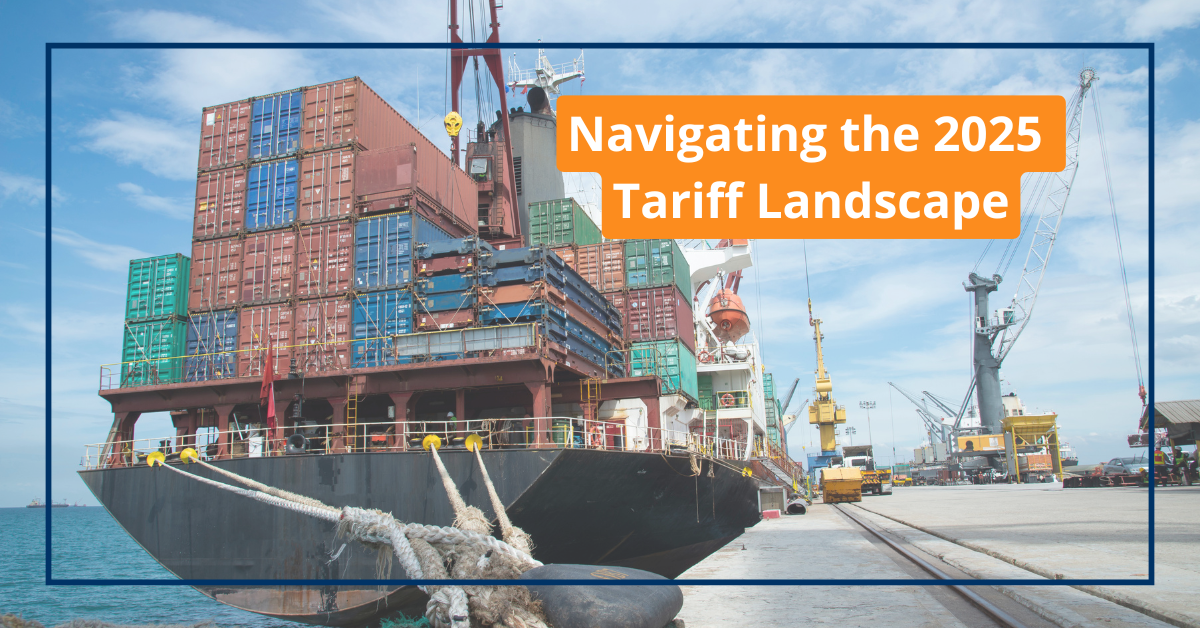Navigating the 2025 Tariff Landscape
February 6, 2025 •Chase Flashman

As President Trump enters office in 2025, the economic landscape of the United States faces shifts reflecting his administration's strategic pivot to revamp trade relations with key partners, including Canada and Mexico. Central to this shift is the reimposition of tariffs, not unlike those introduced in previous administrations. These developments present both a challenge and an opportunity for American businesses, compelling them to adapt to dynamic fiscal conditions.
Tariffs, essentially taxes levied on imports, aim to boost domestic industry but inadvertently raise operational costs for businesses reliant on international trade. The 25% tariffs on goods imported from Canada and Mexico have been particularly impactful, given the intricate trade relationships the U.S. shares with its neighboring countries, integral partners under the United States-Mexico-Canada Agreement (USMCA).
Understanding Tariffs and Their Impact
Tariffs manipulate market dynamics by altering the price of imported goods, impacting supply chains by increasing the cost of goods procured from tariff-afflicted nations. As businesses stretch logistical strategies to maintain profitability amidst inflated expenses, these tariffs threaten their competitive edge and diminish margins.The challenge for U.S. businesses lies not merely in absorbing these additional costs but in re-engineering their strategies to sustainably manage increased operational expenses without passing these onto consumers. For businesses especially involved in sectors like automotive, agriculture, consumer goods, and technology, where trade volumes with Canada and Mexico are substantial, the stakes are incredibly high.
However, the silver lining emerges through strategic mitigation measures. By circumventing cost inflation through strategic partnerships and process optimizations, businesses have the potential to neutralize, or even benefit from the applied tariffs. Here is where ShipSigma becomes indispensable.
ShipSigma: Your Partner in Mitigating Tariff Impact
ShipSigma, leveraging proprietary AI-powered software, offers a robust solution to offload the financial strain imposed by tariffs. By enabling businesses to reduce shipping costs by 25%, ShipSigma effectively counterbalances the 25% tariffs impacting imports from Canada and Mexico. This cost reduction allows businesses to sustain their operations without resorting to drastic changes in pricing strategies, preserving their customer relations and market positioning.How ShipSigma Works
Data-Driven Cost Modeling: ShipSigma’s platform utilizes advanced analytics to dissect shipping expenditure patterns, unveiling the most viable opportunities for cost reduction. By doing so, businesses attain a granular understanding of their logistics finances.
Invoice Auditing and Accuracy: Ensuring accuracy in invoicing is critical, as even minor discrepancies can accumulate into substantial losses. ShipSigma provides a meticulous audit of shipping invoices, aligning them with expected costs and identifying anomalies that could indicate overcharges or inefficiencies.
Negotiation Leverage: Armed with insights from billions of real-time shipping data points, businesses gain unparalleled leverage in negotiating carrier contracts. Understanding market trends and cost-drivers enables customized negotiations that align with operational priorities.
Adaptive Carrier Strategy: Diversifying shipping partners according to performance metrics allows businesses to pivot in real-time to optimize routing decisions and service levels.
The local advantages offered by ShipSigma transcend traditional shipping process configurations. By recalibrating the shipping formula to account for tariff-induced obstacles, businesses can retain their competitive edge and thrive despite fiscal challenges.
Partnerships, Adaptation, and Future Prospects
Partnerships, Adaptation, and Future Prospects
----------------------------------------------
In this global economy, strategic partnerships are central to maintaining competitive positions in the face of geopolitical shifts. ShipSigma not only offers a hedge against the immediate financial brunt of tariffs but molds businesses to withstand future uncertainties through dynamic logistical strategies.
Moreover, as consumer demand continues to evolve rapidly in this competitive landscape, the capability to sustain price stability while maintaining profit margins without compromising service quality will predicate long-term success. ShipSigma’s role goes beyond cost-cutting, driving a paradigm shift that aligns strategic supply chain management with evolving operational strategies.
In conclusion, as the business world adapts to the reinstated tariff policies under President Trump, U.S. enterprises are called to action. They need the foresight to recognize efficient cost-management processes, develop adaptable strategies, and seize innovative pricing models to ensure continuity.
ShipSigma allows you to offset tariff challenges through innovative solutions tailored for today's dynamic fiscal landscape, ensuring your readiness to harness opportunities in an ever-evolving world of international trade.

